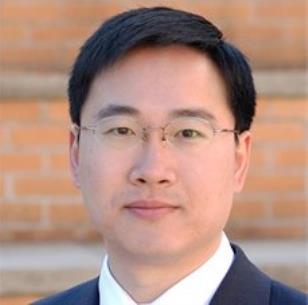Surface Property of Nanomaterials: A Critical Parameter for Nanomedicines
Wednesday, January 29, 2020
4:00 PM-5:30 PM
BIOMED Seminar
Title:
Surface Property of Nanomaterials: A Critical Parameter for Nanomedicines
Speaker:
Hao Cheng, PhD
Associate Professor
Department of Materials Science and Engineering (MSE)
College of Engineering
Drexel University
Details:
Nanomaterials have broad biomedical applications. Although their physicochemical properties, such as shape, size, elasticity, and surface chemical composition, are known to be pivotal in the design of nanomedicines, the impact of dynamic topographical structure of nanomaterials has not been studied. In this talk, I will show the importance of this new parameter for nanomedicine design.
We have found that nanomaterials blood circulation time could be dramatically extended by controlling the dynamic topographical structure of polyethylene glycol (PEG) shell on nanoparticles. Regular high density PEG shell does not have this effect. Surprisingly, our studies reveal that the dynamic effect extends nanoparticle blood circulation via reduced nanoparticle uptake by liver sinusoidal endothelial cells (LSECs) instead of macrophages. The dynamic PEG layers reduce protein binding affinity to nanoparticles. This property can be used to enhance nanoparticle penetration in mucus.
One of the major challenges of nanomedicines in cancer therapy is the inefficient diffusion of drug nanocarriers in solid tumors due to the high density of extracellular matrix in tumors. One old strategy is to conjugate matrix degrading enzymes on nanoparticle surfaces as the enzymes remove barriers for nanoparticle diffusion. However, successful animal studies have not been demonstrated. One reason is the conjugation of bioactive molecules on nanoparticle surfaces often reduces their blood circulation. We show that the problem can be circumvented by embedding matrix degrading enzymes in the PEG shell with dynamic structure instead of presenting the enzymes on the outmost surface of nanoparticles.
The effects of prolonged nanoparticle blood circulation and enhanced diffusion in solid tumors dramatically increased nanoparticle accumulation and penetration in tumors, leading to a highly efficient antitumor efficacy. Thus, our platform technology of controlling topographical structure of nanocarriers may be valuable to enhance the clinical efficacy of a broad range of drug nanocarriers. In addition, I will briefly discuss our study on using nanoparticles to induce antigen-specific immune tolerance for treating autoimmune diseases.
Biosketch:
Hao Cheng, PhD, is an Associate Professor in the Department of Materials Science and Engineering at Drexel University. He received his BE and MS degrees in Chemical Engineering from Tsinghua University in 1999 and 2001, respectively. Dr. Cheng completed his PhD in Materials Science and Engineering from Northwestern University in 2005.
Prior to joining Drexel University in 2012, Dr. Cheng was a postdoctoral associate at Northwestern University and MIT. His laboratory focuses on cell membrane-derived hydrogels, long circulating nanoparticles, and biomaterials/biological materials for inducing antigen-specific immune tolerance.
As a corresponding author, Dr. Cheng has published in journals such as ACS Nano, Nano Letters, Nature Communications, and Advanced Drug Delivery Reviews. He was a recipient of the inaugural Nano Research Young Innovators Award in Nanobiotechnology in 2018.
Contact Information
Ken Barbee
215-895-1335
barbee@drexel.edu

Location
Papadakis Integrated Sciences Building (PISB), Room 120, located on the northeast corner of 33rd and Chestnut Streets.
Audience
- Undergraduate Students
- Graduate Students
- Faculty
- Staff